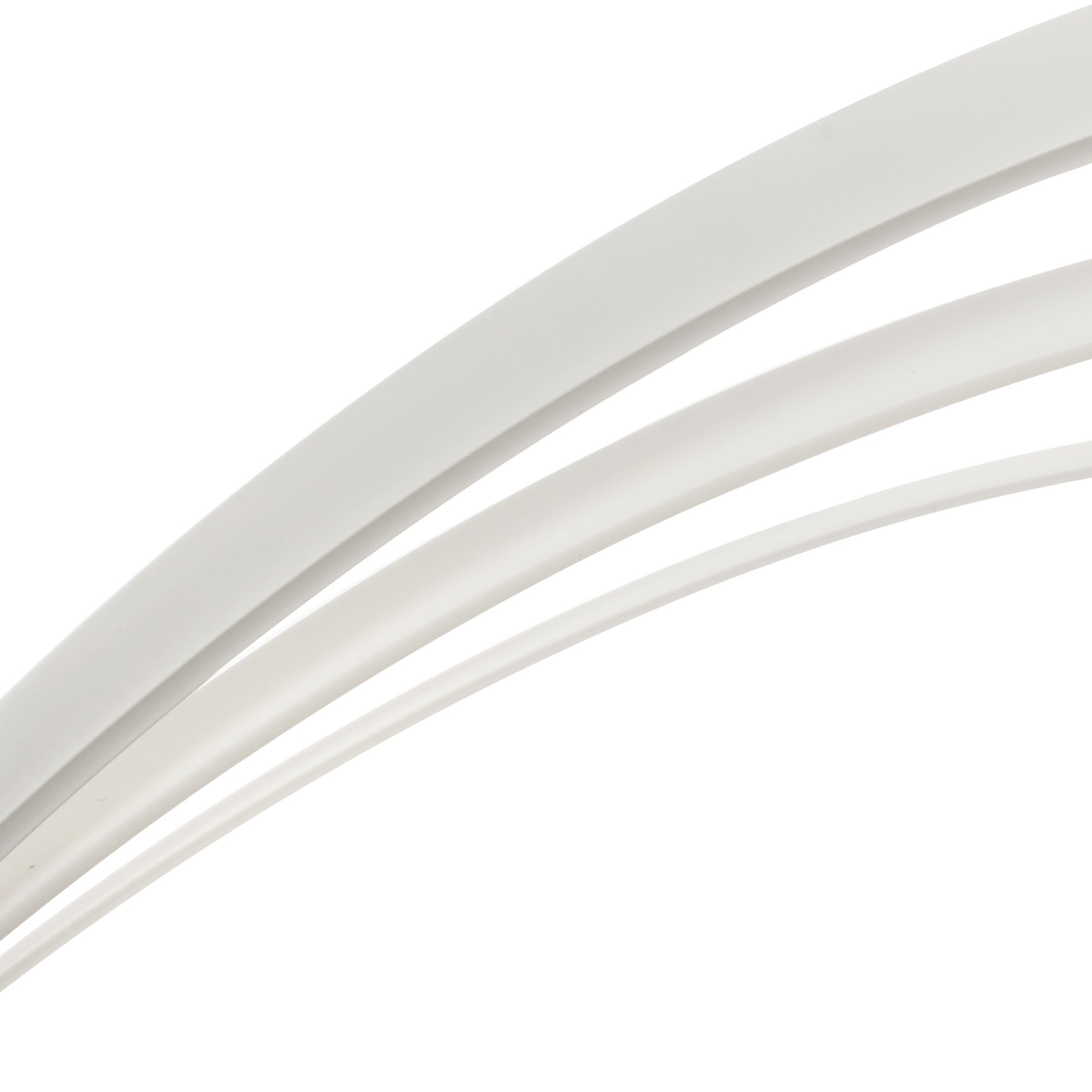How to bind a fretboard, Gibson-style
Look at this closeup of a 1950s Les Paul and you can see the binding nibs capping the ends of each fret. Here’s how to do that, using fret files. Gibson started shaping bindings at the fret ends nearly 100 years ago. After fretting the board, they slapped on the binding then scraped the heck out of it between the frets. The “nibs” remaining at each fret end give a dressy look to the more expensive Gibsons. I'm restoring a 1950s Les Paul that's recovering from some bad repair work. One of its troubles was a botched refret job. Somebody had sanded away the original binding along with much of the fretboard thickness. This guitar’s neck repairs involved removing the fretboard, so I did my refret while the board was off the neck. After pressing in the frets, I filed their ends flush to the edges of the fretboard. Now it’s ready for the binding. I trimmed the new plastic binding to a height that leaves enough to cover the fret ends, plus a little extra to spare I also made the binding’s thickness just a few thousandths oversize. After the board’s glued back on, just a little scraping will make the binding blend smoothly with the wood of the neck. I installed the binding using Weld-On cement, making sure it’s square with the fretboard edge and snug up against the fret ends. Hand-filing is slow going, but I decided to lower this binding using hand tools — like Gibson would have done when this fretboard was made. I started with a half-round file, creating a circular shape beside each fret end with the round edge of the file. Then I brought the remaining material down by hand using the flat side, leaving about 1/32" of clearance to the fretboard. Once I got all the between-frets excess out of the way, it was time for the fun to start! Plastic bindings, wood bindings, multi-layered decorative trim. Pearl inlays and side dots. StewMac has the supplies and tools — and free how-to info to help you, too! Using the square file in my needle file set, I carefully lowered and shaped the binding at the fret ends, matching the fret shape. Then I switched to the flat needle file to level the remaining material to the fretboard. To get a clean look, I made myself a mini-scraper by turning an edge on a razor blade. I did this by dragging the sharp edge across the hard metal of my nut and saddle vise. I'm not using this blade as a cutter, I'm using it as a scraper: pulling, not pushing. Carefully scraping the excess binding made it level with the fretboard as I worked up as close to each fret as I could. With a medium crowning file I continued shaping all of the binding nibs into a rounded-top profile that matched the frets. I used my 8" fret leveler with 320-grit sandpaper to bevel the ends of the binding on the frets. The fretboard’s secured to my bench with double-stick tape. The idea is to bevel away most of the material covering the fret end, leaving just a portion of the binding nib remaining. That’s the Gibson look, though it varies from guitar to guitar due to the handwork involved. A few strokes with the leveler gave me the results I’m after. Once I've attached the fretboard I'll level the frets in the neck jig before sending it to the spray booth to be finished. This neck will look like it did when it left the factory.

Here’s how to bind a board this way

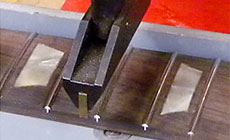
Custom-sized binding


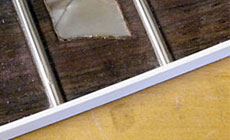

Bindings and trim
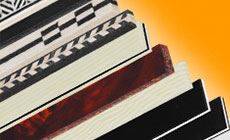



Scraping:
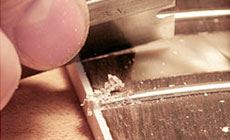
Shaping:

The finishing touch:

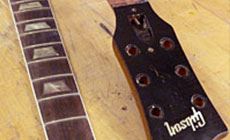
Trade Secrets archive:
